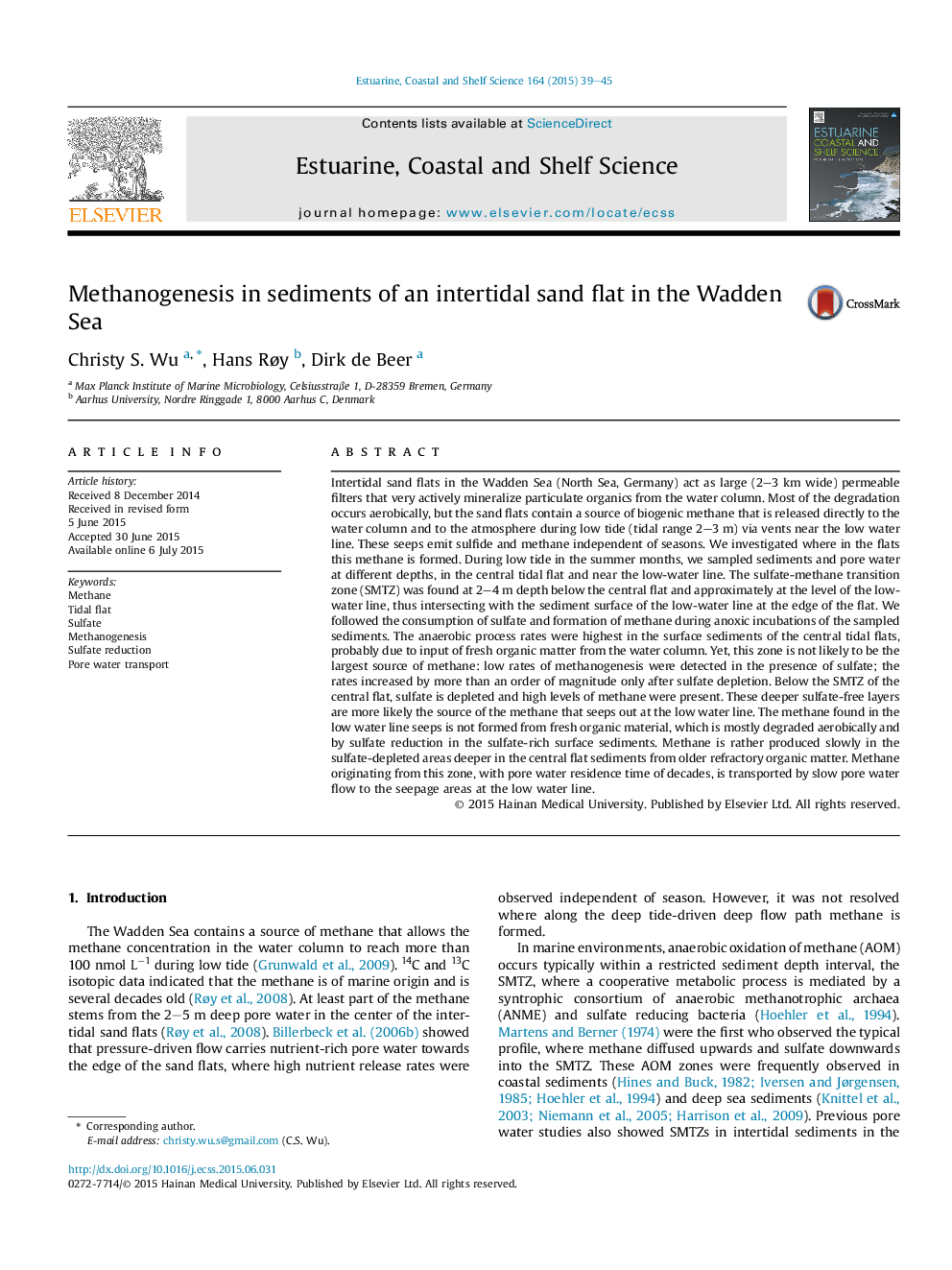| کد مقاله | کد نشریه | سال انتشار | مقاله انگلیسی | نسخه تمام متن |
|---|---|---|---|---|
| 6384666 | 1626633 | 2015 | 7 صفحه PDF | دانلود رایگان |
عنوان انگلیسی مقاله ISI
Methanogenesis in sediments of an intertidal sand flat in the Wadden Sea
ترجمه فارسی عنوان
متانوژنز در رسوبات مسطح شن و ماسه در دریای وادن
دانلود مقاله + سفارش ترجمه
دانلود مقاله ISI انگلیسی
رایگان برای ایرانیان
کلمات کلیدی
متان، مسطح، سولفات، متانوژنز، کاهش سولفات، حمل و نقل آب پا،
موضوعات مرتبط
مهندسی و علوم پایه
علوم زمین و سیارات
زمین شناسی
چکیده انگلیسی
Intertidal sand flats in the Wadden Sea (North Sea, Germany) act as large (2-3Â km wide) permeable filters that very actively mineralize particulate organics from the water column. Most of the degradation occurs aerobically, but the sand flats contain a source of biogenic methane that is released directly to the water column and to the atmosphere during low tide (tidal range 2-3Â m) via vents near the low water line. These seeps emit sulfide and methane independent of seasons. We investigated where in the flats this methane is formed. During low tide in the summer months, we sampled sediments and pore water at different depths, in the central tidal flat and near the low-water line. The sulfate-methane transition zone (SMTZ) was found at 2-4Â m depth below the central flat and approximately at the level of the low-water line, thus intersecting with the sediment surface of the low-water line at the edge of the flat. We followed the consumption of sulfate and formation of methane during anoxic incubations of the sampled sediments. The anaerobic process rates were highest in the surface sediments of the central tidal flats, probably due to input of fresh organic matter from the water column. Yet, this zone is not likely to be the largest source of methane: low rates of methanogenesis were detected in the presence of sulfate; the rates increased by more than an order of magnitude only after sulfate depletion. Below the SMTZ of the central flat, sulfate is depleted and high levels of methane were present. These deeper sulfate-free layers are more likely the source of the methane that seeps out at the low water line. The methane found in the low water line seeps is not formed from fresh organic material, which is mostly degraded aerobically and by sulfate reduction in the sulfate-rich surface sediments. Methane is rather produced slowly in the sulfate-depleted areas deeper in the central flat sediments from older refractory organic matter. Methane originating from this zone, with pore water residence time of decades, is transported by slow pore water flow to the seepage areas at the low water line.
ناشر
Database: Elsevier - ScienceDirect (ساینس دایرکت)
Journal: Estuarine, Coastal and Shelf Science - Volume 164, 5 October 2015, Pages 39-45
Journal: Estuarine, Coastal and Shelf Science - Volume 164, 5 October 2015, Pages 39-45
نویسندگان
Christy S. Wu, Hans Røy, Dirk de Beer,
